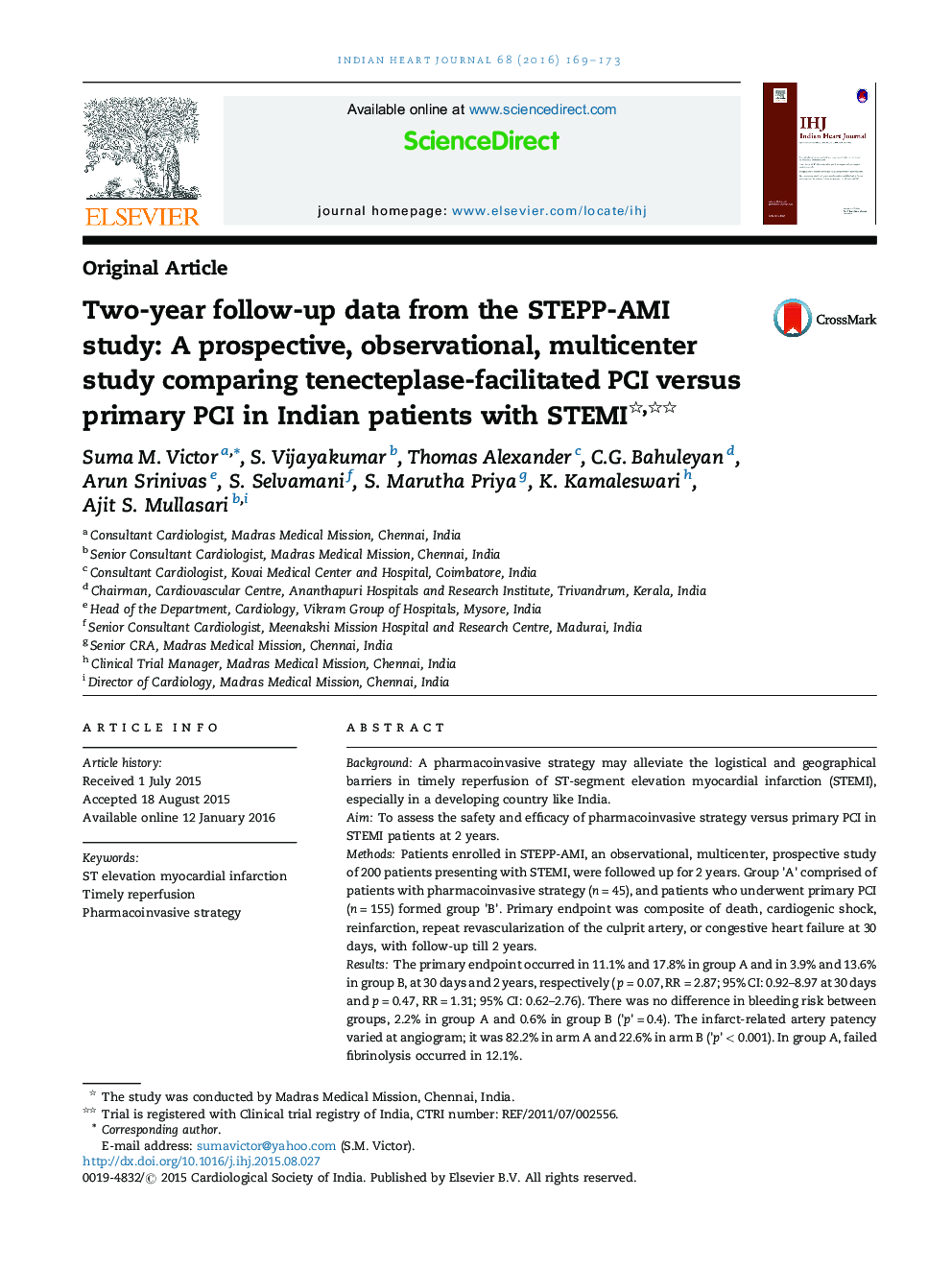| Article ID | Journal | Published Year | Pages | File Type |
|---|---|---|---|---|
| 2927349 | Indian Heart Journal | 2016 | 5 Pages |
BackgroundA pharmacoinvasive strategy may alleviate the logistical and geographical barriers in timely reperfusion of ST-segment elevation myocardial infarction (STEMI), especially in a developing country like India.AimTo assess the safety and efficacy of pharmacoinvasive strategy versus primary PCI in STEMI patients at 2 years.MethodsPatients enrolled in STEPP-AMI, an observational, multicenter, prospective study of 200 patients presenting with STEMI, were followed up for 2 years. Group ‘A’ comprised of patients with pharmacoinvasive strategy (n = 45), and patients who underwent primary PCI (n = 155) formed group ‘B’. Primary endpoint was composite of death, cardiogenic shock, reinfarction, repeat revascularization of the culprit artery, or congestive heart failure at 30 days, with follow-up till 2 years.ResultsThe primary endpoint occurred in 11.1% and 17.8% in group A and in 3.9% and 13.6% in group B, at 30 days and 2 years, respectively (p = 0.07, RR = 2.87; 95% CI: 0.92–8.97 at 30 days and p = 0.47, RR = 1.31; 95% CI: 0.62–2.76). There was no difference in bleeding risk between groups, 2.2% in group A and 0.6% in group B (‘p’ = 0.4). The infarct-related artery patency varied at angiogram; it was 82.2% in arm A and 22.6% in arm B (‘p’ < 0.001). In group A, failed fibrinolysis occurred in 12.1%.ConclusionA pharmacoinvasive strategy resulted in outcomes that were comparable with primary PCI at 2 years, suggesting it might be a viable option in India. Larger studies are required to confirm these findings.
